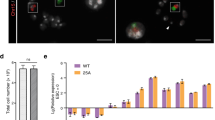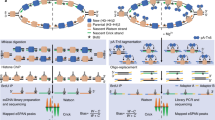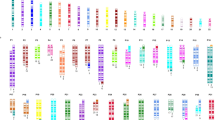Abstract
Chromosome 17 is unusual among the human chromosomes in many respects. It is the largest human autosome with orthology to only a single mouse chromosome1, mapping entirely to the distal half of mouse chromosome 11. Chromosome 17 is rich in protein-coding genes, having the second highest gene density in the genome2,3. It is also enriched in segmental duplications, ranking third in density among the autosomes4. Here we report a finished sequence for human chromosome 17, as well as a structural comparison with the finished sequence for mouse chromosome 11, the first finished mouse chromosome. Comparison of the orthologous regions reveals striking differences. In contrast to the typical pattern seen in mammalian evolution5,6, the human sequence has undergone extensive intrachromosomal rearrangement, whereas the mouse sequence has been remarkably stable. Moreover, although the human sequence has a high density of segmental duplication, the mouse sequence has a very low density. Notably, these segmental duplications correspond closely to the sites of structural rearrangement, demonstrating a link between duplication and rearrangement. Examination of the main classes of duplicated segments provides insight into the dynamics underlying expansion of chromosome-specific, low-copy repeats in the human genome.
This is a preview of subscription content, access via your institution
Access options
Subscribe to this journal
Receive 51 print issues and online access
$199.00 per year
only $3.90 per issue
Buy this article
- Purchase on SpringerLink
- Instant access to full article PDF
Prices may be subject to local taxes which are calculated during checkout



Similar content being viewed by others
References
Debry, R. W. & Seldin, M. F. Human/mouse homology relationships. Genomics 33, 337–351 (1996)
International Human Genome Sequencing Consortium. Finishing the euchromatic sequence of the human genome. Nature 431, 931–945 (2004)
Grimwood, J. et al. The DNA sequence and biology of human chromosome 19. Nature 428, 529–535 (2004)
Bailey, J. A. et al. Recent segmental duplications in the human genome. Science 297, 1003–1007 (2002)
International Chicken Genome Sequencing Consortium. Sequence and comparative analysis of the chicken genome provide unique perspectives on vertebrate evolution. Nature 432, 695–716 (2004)
Bourque, G., Zdobnov, E. M., Bork, P., Pevzner, P. A. & Tesler, G. Comparative architectures of mammalian and chicken genomes reveal highly variable rates of genomic rearrangements across different lineages. Genome Res. 15, 98–110 (2005)
Chance, P. F. et al. DNA deletion associated with hereditary neuropathy with liability to pressure palsies. Cell 72, 143–151 (1993)
Park, S. S. et al. Structure and evolution of the Smith–Magenis syndrome repeat gene clusters, SMS-REPs. Genome Res. 12, 729–738 (2002)
Chen, K. S. et al. Homologous recombination of a flanking repeat gene cluster is a mechanism for a common contiguous gene deletion syndrome. Nature Genet. 17, 154–163 (1997)
Inoue, K. et al. The 1.4-Mb CMT1A duplication/HNPP deletion genomic region reveals unique genome architectural features and provides insights into the recent evolution of new genes. Genome Res. 11, 1018–1033 (2001)
Lupski, J. R. et al. DNA duplication associated with Charcot–Marie–Tooth disease type 1A. Cell 66, 219–232 (1991)
Lupski, J. R. & Garcia, C. A. in The Metabolic and Molecular Basis of Inherited Diseases (eds Scriver, C. R., Beaudet, A. L., Sly, W. S. & Valle, D.) 5759–5788 (McGraw-Hill, New York, 2001)
Potocki, L. et al. Molecular mechanism for duplication. 17p11.2—the homologous recombination reciprocal of the Smith–Magenis microdeletion. Nature Genet. 24, 84–87 (2000)
Barbouti, A. et al. The breakpoint region of the most common isochromosome, i(17q), in human neoplasia is characterized by a complex genomic architecture with large, palindromic, low-copy repeats. Am. J. Hum. Genet. 74, 1–10 (2004)
Bailey, J. A. et al. Segmental duplications: organization and impact within the current human genome project assembly. Genome Res. 11, 1005–1017 (2001)
Nusbaum, C. et al. DNA sequence and analysis of human chromosome 18. Nature 437, 551–555 (2005)
Nusbaum, C. et al. DNA sequence and analysis of human chromosome 8. Nature 439, 331–335 (2006)
Hillier, L. W. et al. Generation and annotation of the DNA sequences of human chromosomes 2 and 4. Nature 434, 724–731 (2005)
Deloukas, P. et al. The DNA sequence and comparative analysis of human chromosome 10. Nature 429, 375–381 (2004)
Zody, M. C. et al. Analysis of the DNA sequence and duplication history of human chromosome 15. Nature 440, 671–675 (2006)
Paulding, C. A., Ruvolo, M. & Haber, D. A. The Tre2 (USP6) oncogene is a hominoid-specific gene. Proc. Natl Acad. Sci. USA 100, 2507–2511 (2003)
Yunis, J. J. & Prakash, O. The origin of man: a chromosomal pictorial legacy. Science 215, 1525–1530 (1982)
Stefansson, H. et al. A common inversion under selection in Europeans. Nature Genet. 37, 129–137 (2005)
Stankiewicz, P., Park, S. S., Inoue, K. & Lupski, J. R. The evolutionary chromosome translocation 4;19 in Gorilla gorilla is associated with microduplication of the chromosome fragment syntenic to sequences surrounding the human proximal CMT1A-REP. Genome Res. 11, 1205–1210 (2001)
Eichler, E. E. Recent duplication, domain accretion and the dynamic mutation of the human genome. Trends Genet. 17, 661–669 (2001)
Stankiewicz, P., Shaw, C. J., Withers, M., Inoue, K. & Lupski, J. R. Serial segmental duplications during primate evolution result in complex human genome architecture. Genome Res. 14, 2209–2220 (2004)
Ma, B., Tromp, J. & Li, M. PatternHunter: faster and more sensitive homology search. Bioinformatics 18, 440–445 (2002)
Acknowledgements
Special thanks are due to L. Gaffney for help with figures and tables. We thank T. Furey for help with lists of genetic markers and placement of RefSeqs, and K. Lindblad-Toh for sharing data on the opossum genome. We thank A. Kong for providing updated genetic map data, T. Hudson for technical advice, and the members of the Baylor College of Medicine Human Genome Sequencing Center, the J. Craig Venter Institute Joint Technology Center, and the Washington University Genome Sequencing Center for generation and early release of the genome assembly of the rhesus macaque. We also acknowledge the HUGO Gene Nomenclature Committee (S. Povey (chair), E. A. Bruford, R. C. Lovering, M. J. Lush, K. M. B. Sneddon, T. P. Sneddon, C. C. Talbot Jr and M. W. Wright) for assigning official gene symbols for human chromosome 17. We are grateful to all the members, present and past, of the Broad (and Whitehead) and Wellcome Trust Sanger sequencing platforms for their dedication and the consistent high quality of their data. The sequencing of human chromosome 17 was supported by a grant to the Whitehead Institute Center for Genome Research (now the Broad Institute) from the National Human Genome Research Institute (NHGRI). The sequencing of mouse chromosome 11 was supported by a grant to the Sanger Institute by the Wellcome Trust.
Author information
Authors and Affiliations
Corresponding authors
Ethics declarations
Competing interests
Accession numbers for all clones contributing to the finished sequence of human chromosome 17 can be found in Supplementary Table S2, and for mouse chromosome 11 in Supplementary Table S5. The updated human chromosome 17 sequence can be accessed through GenBank accession number NC_000017. The updated mouse chromosome 11 sequence can be accessed through the accession numbers listed in Supplementary Table S5. Reprints and permissions information is available at npg.nature.com/reprintsandpermissions. The authors declare no competing financial interests.
Supplementary information
Supplementary Notes
This file contains the Supplementary Methods (including those for: mapping, sequencing, quality assessment and annotation of human chromosome 17; mapping, sequencing and quality assessment of mouse chromosome 11; duplication class clustering, syntenic mapping, ancestral reconstruction and assignment of breakpoints), Supplementary Results (including those for: gaps in the clone paths and extreme genes), Supplementary Discussion (including: Human-specific polymorphic inversion and class 3 duplicon fusion elements) and additional references. (DOC 67 kb)
Supplementary Tables 1–6
This file contains Supplementary Tables 1–6, covering gaps, clones, and contributing sequencing centers for human chromosome 17 and mouse chromosome 11; Human chromosome 17 gene content and tRNA genes on human chromosome 17. (DOC 3179 kb)
Supplementary Tables 7–11
This file contains Supplementary Tables 7–11, covering genetic markers and radiation hybrid markers for human chromosome 17 and mouse chromosome 11; Gene names and symbols for human chromosome 17. (DOC 3531 kb)
Supplementary Figures
Supplementary Figures nature04689-s4.pdf This file contains Supplementary Figures 1–5. (PDF 701 kb)
Supplementary Figure Legends
This file contains the legends for the Supplementary Figures. (DOC 24 kb)
Rights and permissions
About this article
Cite this article
Zody, M., Garber, M., Adams, D. et al. DNA sequence of human chromosome 17 and analysis of rearrangement in the human lineage. Nature 440, 1045–1049 (2006). https://doi.org/10.1038/nature04689
Received:
Accepted:
Published:
Issue date:
DOI: https://doi.org/10.1038/nature04689
This article is cited by
-
A catalog of curated breast cancer genes
Breast Cancer Research and Treatment (2022)
-
A Review of Functional Characterization of Single Amino Acid Change Mutations in HNF Transcription Factors in MODY Pathogenesis
The Protein Journal (2021)
-
Zika virus infection leads to mitochondrial failure, oxidative stress and DNA damage in human iPSC-derived astrocytes
Scientific Reports (2020)
-
Microarray testing in clinical diagnosis: an analysis of 5,300 New Zealand patients
Molecular Cytogenetics (2016)
-
PacBio-LITS: a large-insert targeted sequencing method for characterization of human disease-associated chromosomal structural variations
BMC Genomics (2015)



